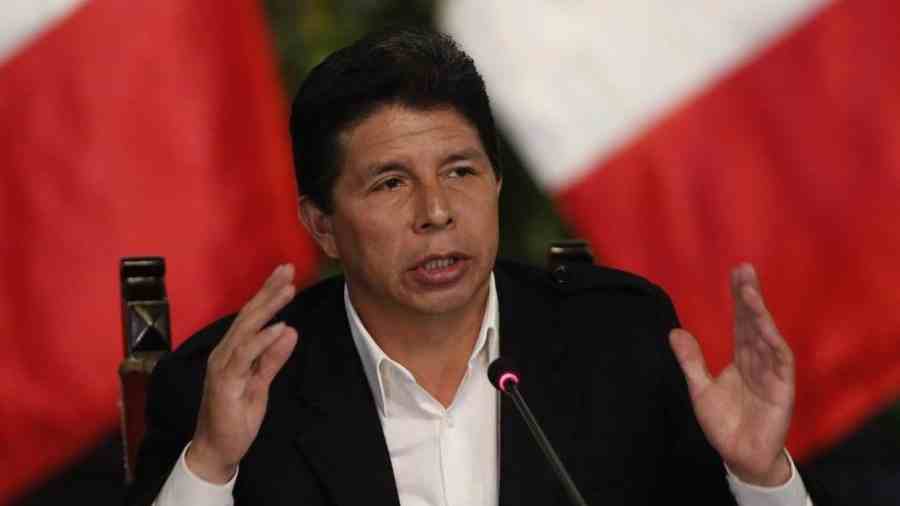It was a day on which much of Peru was focused on Congress, where an impeachment vote was planned against the President on corruption charges.
But shortly before noon, the Peruvian leader addressed the country in a surprise televised address.
He announced the dissolution of Congress and the installation of an emergency government, stunning political leaders across the spectrum, including his own allies, by effectively trying to carry out what was widely condemned as an attempted coup to cling to power.
Government officials resigned en masse. The top court declared the move unconstitutional.
And the country’s armed forces and the national police issued a joint statement suggesting they would not support him.
By day’s end, Pedro Castillo, 53, was ousted from power and under arrest. Dina Boluarte, his vice-president, was sworn in as President and became the first woman to lead Peru.
It was a cinematic conclusion to Castillo’s presidency, the first Leftist to be elected Peru’s President in more than a generation.
The former farmer, teacher and union activist had campaigned last year on a pledge to transform the ailing economy and reverse the high rates of poverty among rural Peruvians, which had worsened during the pandemic.
But his attempt to seize power echoed a similar move by former President Alberto Fujimori 30 years ago.
Like Castillo, Fujimori was a populist outsider who was elected democratically in 1990. Two years later, he staged a coup to shut down Congress with the support of the military, and ruled as a dictator until 2000.
He is now in prison on charges of corruption and human rights abuses. But Peru has continued to be convulsed by years of corruption scandals resulting in six Presidents since 2016.
Twice before during Castillo’s 16 months in power, Congress had tried to oust him but failed.
Castillo was one of several Leftists in Latin America who had been swept into power by votes disillusioned by the establishment, fed up with decades of inequality, high unemployment and an elite political class tainted by years of corruption and infighting.
But he appeared uninterested in making good on his campaign promises and was quickly confronted by a cascading stream of obstacles that paralyzed his administration, including high-level corruption scandals, criminal investigations and cabinet turnover.
Castillo churned through more than 80 ministers and filled many posts with political allies lacking relevant experience, some of whom have faced investigations for corruption, domestic violence and murder.
Prosecutors accused him of leading a criminal organisation with lawmakers and family members to profit off government contracts and of repeatedly obstructing justice, sometimes seemingly in plain view — such as when his daughter disappeared from the presidential palace as she faced arrest and his office later claimed that footage that would have captured the moment went missing.
The President’s approval rating slumped to 19 per cent in Lima, though in rural areas it remained at 45 per cent, just four percentage points lower than a year ago, according to polls last month by the Institute of Peruvian Studies.
Congress scheduled a third impeachment vote last week after Castillo threatened to dissolve Congress last month.
It was just hours before that vote when Castillo announced the dissolution of Congress and the installation of an emergency government to rule by decree, while also imposing an immediate national curfew.
New York Times News Service











